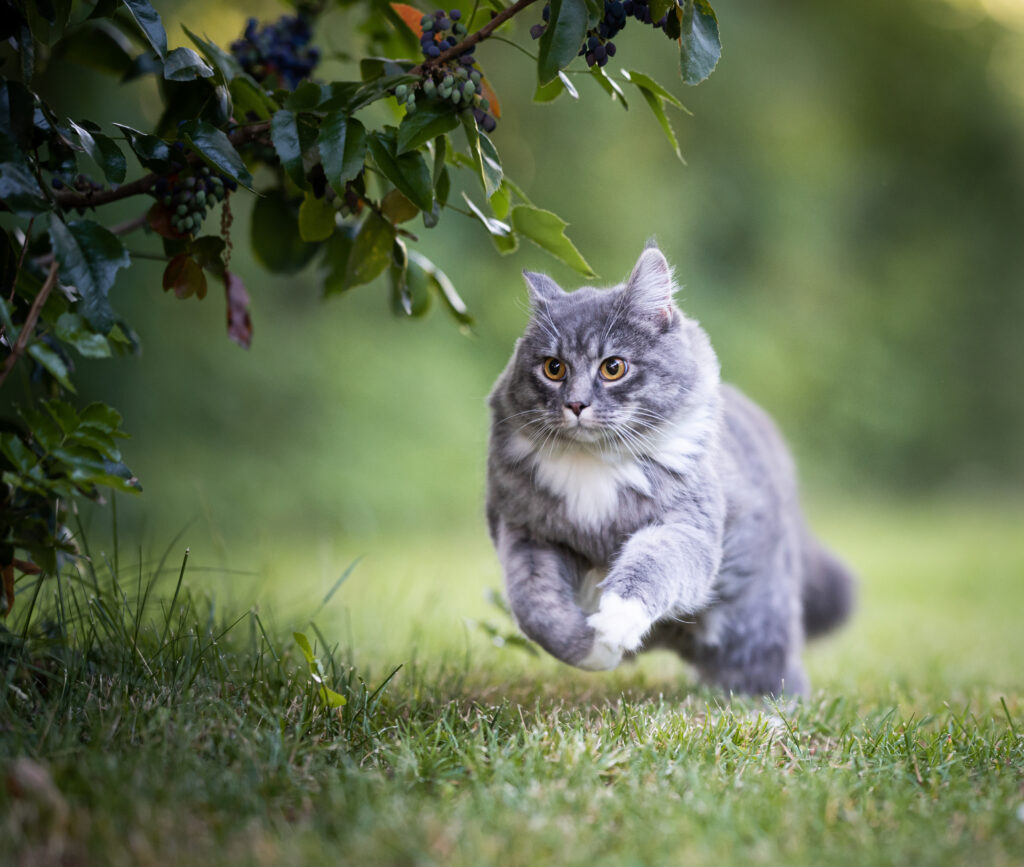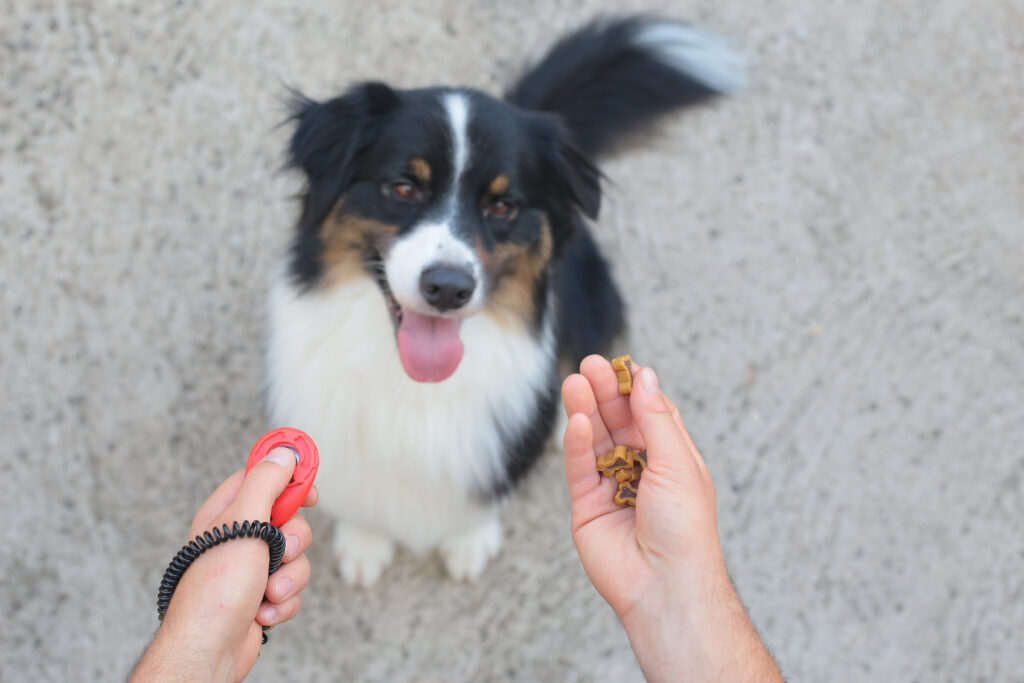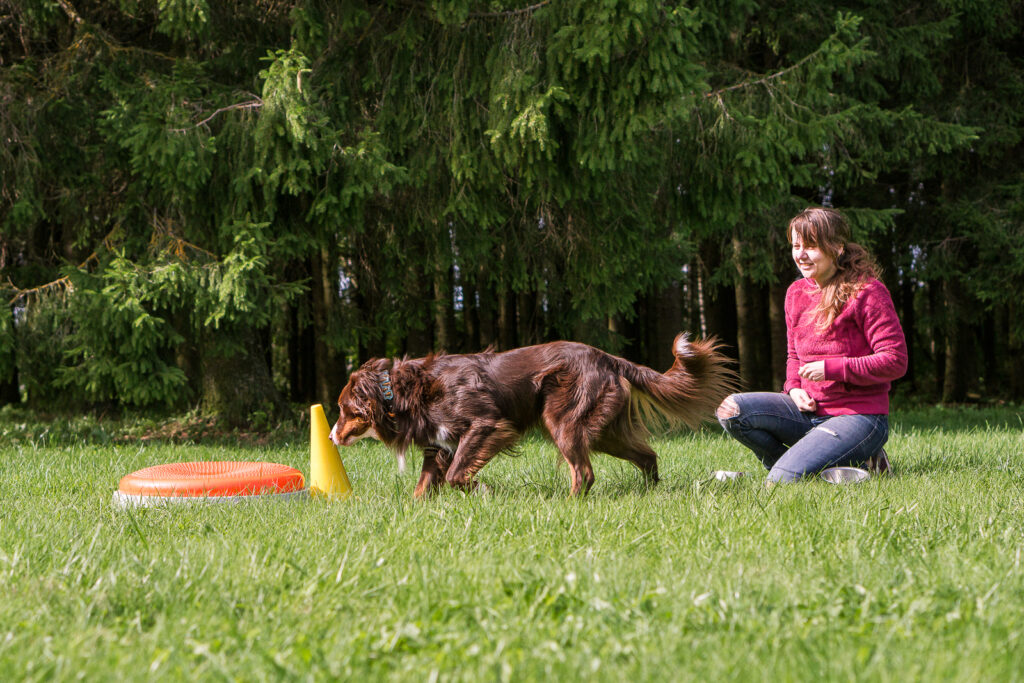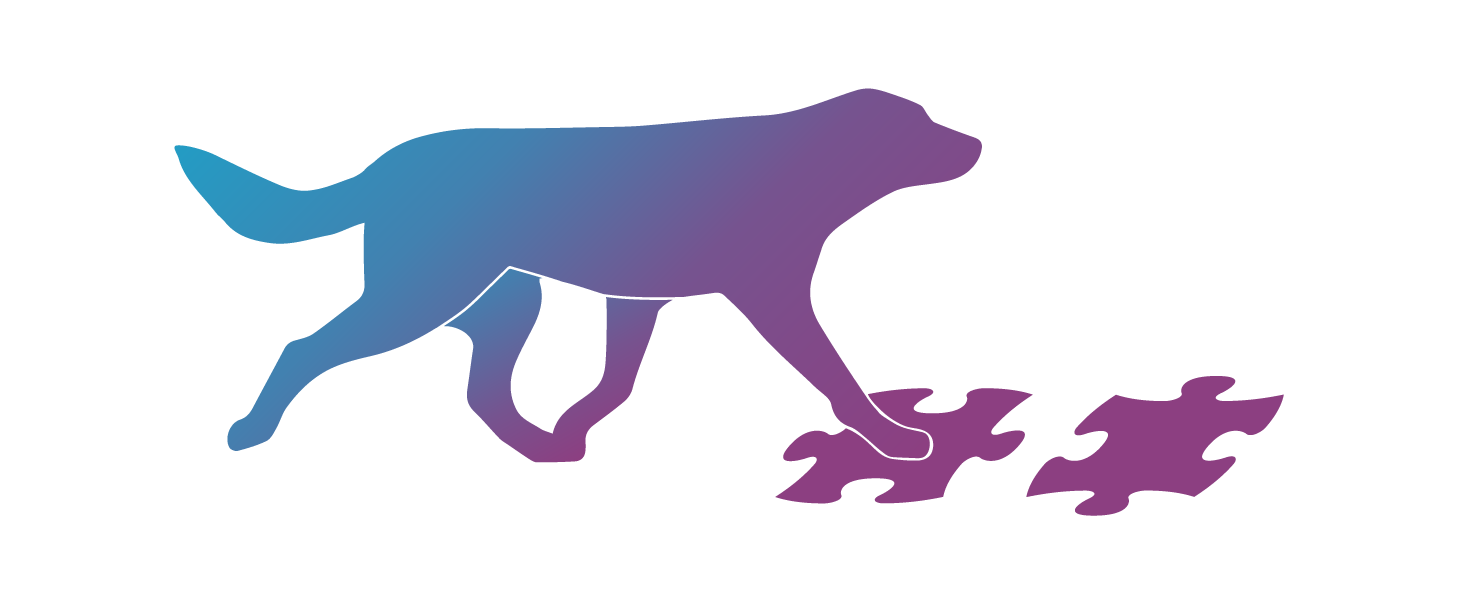Linking arousal to movement skills. Part 2
In the previous blog post we looked at arousal levels and how they are linked to movement skills. This time we are going to look at the different factors affecting arousal levels and see how can we use coordination and movement skill training for keeping our dogs in The Flow mindset. Spoiler alert: it’s more about training us, the handlers!
There are several reasons why our dogs may switch from optimal arousal – The Flow – to over arousal – The Red.
One of the reasons can be the breed. Certain breeds are more likely to react to different factors in our training, thus affecting the arousal levels.
Past training history is something that can also affect the arousal levels and especially switching between different training methods.
Environment also plays a huge role. Does training vs competition sound familiar? Things happening around us can definitely increase arousal. Are there any other dogs involved in the training session? Or maybe there’s a cat running past just as we are doing an exercise?
There are many, many different factors affecting the arousal level. There are factors beyond our control. But the most important one is something we can actually change…

One of the key factors affecting arousal levels is confusion.
And that’s what I’d like to talk about in more detail. Whenever a learner is confused then he’s also more likely to switch from The Flow mindset to over arousal.
Imagine doing a task your supervisor asked you to finish in 2 hours time. Now imagine not understanding exactly what you’re expected to do. Think about the outcome and not knowing whether your supervisor will be happy or grumpy about the results. You do your best, but maybe the supervisor is in a foul mood?! And then wondering if you will actually get paid for the task! Or maybe the paycheck will be late like last time?

The same happens to our dogs. When they are unsure about what is expected of them, what will be the result of their behavior or how will they get reinforced, then they will get confused, maybe even frustrated. It’s very likely that instead of staying in The Flow mindset, they will move into The Red. When our goal is to work in The Flow mindset, then confusion is something we really, really want to avoid.
The good news is … we can do a lot from our part to take confusion to a minimum!
We can make sure the exercise structure is clear for our learners.
We can make sure our learners do know how their behavior is linked to the outcome (in our case reinforcement).
And we can also make sure our learners know how and where their paycheck will arrive.
We can make sure our reinforcement delivery system is clear for the learner.
That’s what we’re going to look in more detail now (spoiler alert: reinforcement delivery system is the key when working on movement skills!).
Reinforcement delivery system – key to success
The most fundamental skill we as dog trainers should have, is to deliberately use markers – the signals indicating how and when the reinforcement will be available – and make sure our markers are separate from the reinforcement delivery movement. Unless we want the movement to be the marker. If we don’t pick the markers, our learners will pick these for us and we may not like the outcome. Usually our dogs will pick something very reliable that always predicts the reinforcement – like a hand reaching for the pocket or a hand moving towards a bowl. Our dogs are most likely to pick a visual marker, something they can see. Unless we use something clearer!

Messy handler mechanics means poor movement skills
When we work with movement and coordination exercises, we’d expect our learners to focus on their own movement and most likely look at some kind of a target where to move. Guess what happens when they also rely on visual markers from us for reinforcement? That’s right, they cannot focus on the exercise – targets and movement – and they will focus on us and our hand movements instead.
Here’s an example to illustrate this. When I am working on Movement Puzzles – coordination exercises focusing on movement and environmental cues – then the reinforcement is delivered in two bowls. The foundation of the Puzzles is the two bowl game, moving between two bowls and doing tasks between the bowls.
I use a marker word during the Puzzles that lets my dogs know the treat will be delivered in a bowl. I try really hard to keep my mechanics clear so that the marker word comes before I start the reinforcement delivery movement.

As I do these exercises with my dogs, my treat delivery mechanics always starts suffering after a couple of minutes of training. It may happen that I actually start my treat delivery movement BEFORE actually SAYING the marker word.
As visual learners, my dogs very quickly see from the corner of the eye that I started that delivery movement before I said the marker word. During the next repetition they actually try to keep an eye on me because obviously my movement is a more reliable marker for them than me see saying the marker word.
But here’s the problem. When we do the coordination or movement exercises, we would like our dogs to be focused on their movement and on the exercises that they are supposed to be doing. As soon as my dogs start looking at me because of my faulty mechanics, they find it very difficult to focus on the exercises. They may miss one of the cones when looking at me. They struggle figuring out the foot pattern. And they may even trip and lose their balance during the exercises. They are no longer in The Flow mindset for coordination work, they are no longer mindful about their own movement but rather multitask, trying to keep an eye on me + do the exercise.
When the dogs cannot focus on the exercise at hand they won’t develop their coordination and movement skills. And that’s not only a problem with coordination training! If we generally train with messy mechanics then our dogs will really struggle developing good physical and movement skills during the exercises.
The only solution here is to train handler mechanics without our dogs. That’s the only way for cleaning up our own movements and coordination without accidentally teaching our dogs to keep an eye on our treat hand.
Handler mechanics = coordination training for us, the handlers
By doing the Movement Puzzles, I’ve actually realized how crucial our own mechanics is when training our dogs. Us being uncoordinated or messy with our own mechanics means that our dogs will also be uncoordinated in their movement.
Us being messy with the mechanics means that our dogs can’t develop good movement skills. It also means that instead of staying in the super focused Flow mindset, our dogs will quickly move into The Red.
In order to work on our dogs’ coordination skills, we actually have to work on our our own mechanics first! We have to do our own coordination exercises! And the good news is that working on our mechanics is a transferable skill. If we work on our own mechanics during coordination exercises, then it’s very likely that we will be more diligent also during other training sessions. And that makes us way better trainers to our dogs! Yay!
With predictable handler movements, our dogs will find it easier to focus on the exercises in every training session. I can assure you that the cleaner your own mechanics and reinforcement delivery system, the more your dog will be able to stay in The Flow mindset and also develop good movement skills.
Here are some exercises you can do for developing reinforcement delivery mechanics and practice WITHOUT your dog 😉 The video is one of the live videos from my exclusive Members Only Facebook group.
Also, I have something cool planned for you for next Friday. Something related to handler mechanics. Which, I hope, you’re as excited about as I am!
If you enjoyed this blog post, share it with your friends using the buttons below. Or leave me a comment, letting me know you’re here! It’s a huge +R for me 🙂 Thank you!
Happy training!
Mari & Co.

Mari I am really enjoying your videos. You have shared so much information in a way that is meaningful and understandable. I am going to start practicing without my dog more to make me a better trainer.
Thank you so much for the kind words, Judy! It’s so reinforcing to hear that this content is helping you on your training journey 🙂
The consequences of poor handler mechanics are so visible in my 5yo kelpie!!! Thank you so much for articulating these so very clearly ????
Handler mechanics is such a fun journey! And I really do know what you mean about seeing the consequences of poor mechanics. My oldest dog (6 yo) has such a baggage of me not training overly well. But the good thing is that our dogs are really helpful and as we improve, they are also willing to change their behavior patterns around reinforcement 🙂